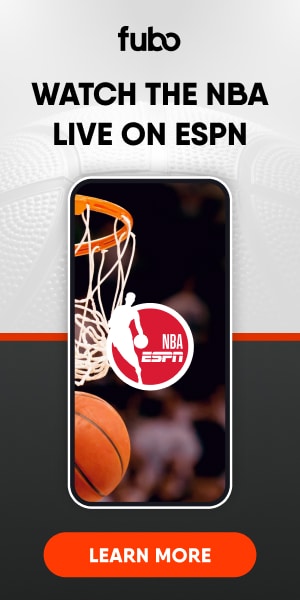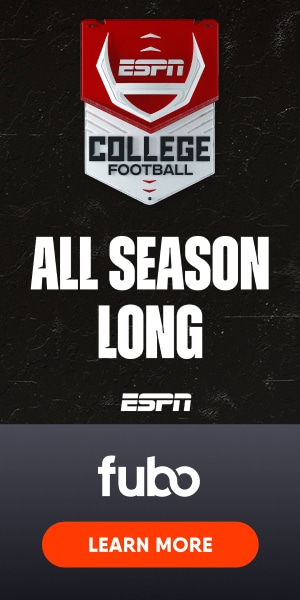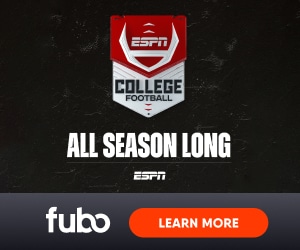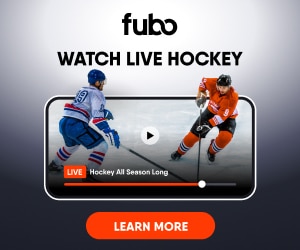Fubo news breaks down the grass vs. debate that is raging all over the NFL. Watch the NFL all season long live on Fubo.
The NFL Players Association has ramped up its calls for all NFL surfaces to be converted to grass. High-profile stars such as New York Jets quarterback Aaron Rodgers and Minnesota Vikings wide receiver Justin Jefferson have sustained significant injuries on turf fields already this season.
New NFLPA executive director Lloyd Howell last month issued a statement calling for all NFL fields to be made of natural grass, per Pro Football Talk’s Mike Florio.
“Moving all stadium fields to high-quality natural grass surfaces is the easiest decision the NFL can make,” Howell said. “The players overwhelmingly prefer it and the data is clear that grass is simply safer than artificial turf.”
It makes sense that the players would be the most natural source of information on the toll different surfaces exact on them. They are the ones playing on those fields, dealing with the postgame repercussions.
But it’s not as simple as Howell makes it sound.
Understanding the history of the turf vs. grass debate provides context for the problem.
Watch the NFL all season long on Fubo live: Start your free trial today!
At first glance, the death of the multi-purpose stadium provides an opportunity for change
For decades, NFL teams shared stadiums with Major League Baseball franchises on both grass and turf configurations.
It’s important to note, however, that the term “multi-purpose stadium” is a bit disingenuous. All stadiums are multi-purpose because the cities (mostly) that own these facilities aren’t investing hundreds of millions of dollars for a facility that is used eight or nine times a year.
Perhaps “multi-sport stadium” is a more apt descriptor. The last of these in the NFL went the way of the dodo in 2019, the last season the Raiders played in Oakland before moving to Allegiant Stadium in Las Vegas. A normal early-season sight in Oakland was the Raiders playing on a field that was part grass and part dirt, with the infield cutout taking up a significant chunk of the playing surface.
After the A’s finished their season, sod replaced the dirt.
The Raiders’ move ended decades of NFL teams playing in multi-sport stadiums. The only teams that haven’t shared a facility with a baseball club are the Baltimore Ravens, Houston Texans, Jacksonville Jaguars, Dallas Cowboys, Carolina Panthers and Tampa Bay Buccaneers.
Outside of the Cowboys (who began play in 1960) and the Bucs (first game in 1976), the rest of these were born in the 1990s or later. The rest of the NFL was already building or planning to build football-only stadiums.
With 30 stadiums across the NFL now housing football teams as their primary tenants, what is in the way of conversion to grass? Glad you asked.
Watch the NFL all season long on Fubo live: Start your free trial today!
Some stadiums simply weren’t built for grass
After the Rodgers injury on the opening Monday night of the season, Maury Glover of Fox9-KMSP in Minneapolis raised the question of the feasibility of a grass surface as U.S. Bank Stadium, which opened in 2016 as a replacement for the aging Metrodome.
The answers weren’t encouraging.
“Complete enclosed canopy stadiums like U.S. Bank Stadium are almost never fielded with a natural turfgrass,” said Jon Trappe, an educator at the University of Minnesota’s Turfgrass Extension.
The problem in Minneapolis is planetary. Natural grass inside the facility would simply not have enough daylight to sustain grass.
“Sun angle is lower, so light quality and quantity are poor, so day length is short, and the light angle is weaker,” Trappe said. “So the grasses themselves are getting less sunlight, which is what they need for photosynthesis.”
Grow lights could be an answer, just not a cost-effective one. With grow lights and other needed infrastructure to support a grass field, the estimated cost of converting U.S. Bank Stadium is in the range of $4 million to $5 million a year.
Other indoor stadiums face similar concerns
Other facilities in the same situation regarding daylight and grass growth include Ford Field in Detroit and Lumen Field in Seattle.
Beyond that, there are older domes such as Caesars Superdome in New Orleans, which opened in 1975 and used an AstroTurf surface from 1975-2002 before switching to newer alternative field turf in 2003 and sport turf in 2010. A concrete roof does not bode well for grass growth.
It’s also worth pointing out that AstroTurf was specifically developed for the Houston Astrodome in the mid-1960s after it was discovered the grass baseball field could not survive under the glass roof for more than about half a season.
There are two remaining indoor stadiums in the NFL with grass fields: State Farm Stadium in suburban Phoenix and Las Vegas’ Allegiant Stadium. NRG Stadium in Houston had a grass surface from its opening in 2002 through 2015 before turf was installed for the 2015 season.
Watch the NFL all season long on Fubo live: Start your free trial today!
The NFL and its owners are resistant to a grass-only mandate
Players know what their bodies go through playing on grass vs. games on turf. Despite that, the NFL keeps trotting out “independent” studies that show there is negligible injury risk between the two surfaces.
The league is evenly split between the two surfaces. Fourteen stadiums have grass fields, fourteen have artificial surfaces and two have hybrids with elements of each.
Those two stadiums are Green Bay’s Lambeau Field and Lincoln Financial Field in Philadelphia. Both use Desso GrassMaster, a mix of artificial fibers and grass developed by Netherlands-based Desso Sports in 1993.
The grass fields are the aforementioned Arizona facility along with Baltimore, Chicago, Cleveland, Denver, Jacksonville, Kansas City, Las Vegas, Miami, Pittsburgh, San Francisco, Tampa Bay, Tennessee and Washington.
Players want a ban on slit-film fields
In April, NFLPA president JC Tretter called for a league-wide ban on a specific type of artificial surface known as slit-film.
Two teams changed surfaces away from that material for the 2023 season, the Lions and Jets. Cincinnati, Indianapolis and Minnesota have slit-film surfaces, though the Vikings have plans to change it for next season.
But the Tennessee Titans switched the surface in Nissan Stadium from grass to Matrix Helix Turf with organic filler (coconut and cork) instead of shredded black rubber. The Titans cited data that the grass at the stadium was inconsistent and that the facility was among the NFL leaders in lower-body injuries.
The NFL seems to contradict itself on player safety issues at times. Mandating a switch away from slit-film turf is a bridge too far despite data indicating the injury risk is higher on that surface when compared to other plastic grass.
Simiarly, Guardian Caps are now used in NFL practices, but any suggestions they be used in games are dismissed out of hand. According to its own website, Guardian Caps reduce the force of impact to the helmet by up to 12% if just one player is wearing it. If both players are using the caps, the force reduction is around 20%
The NFL has come a long way from players slamming into the brick walls of Wrigley Field because there was barely room for the endzone, or the Baltimore Colts playing at old Memorial Stadium on what players referred to jokingly as “artificial dirt.”
But a change from turf to grass is more problematic than simply doing a Jean-Luc Picard and saying, “make it so.”
Regional restrictions may apply.













